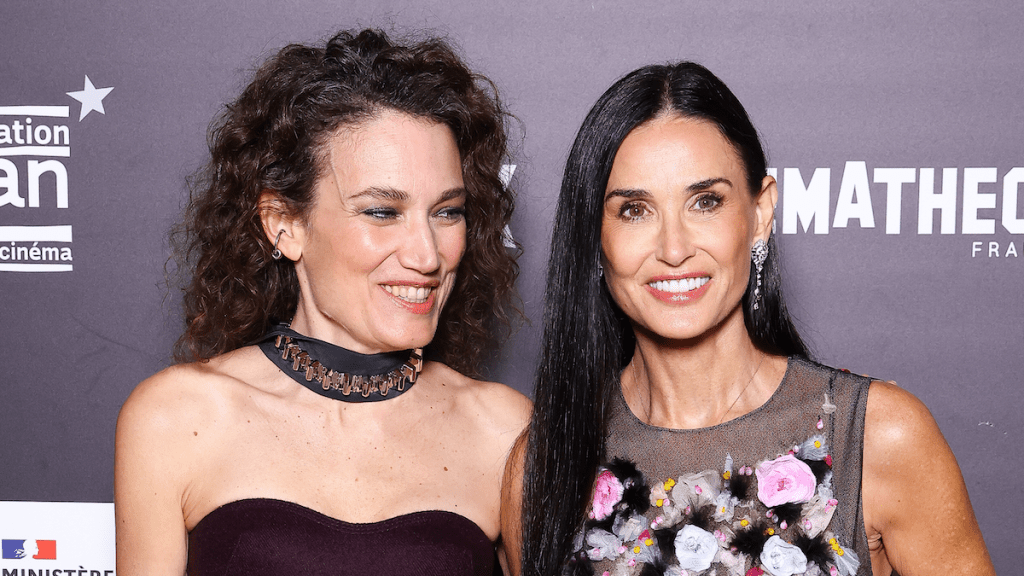MoviesNewsTalk
Female Film Directors: Statistics, Struggles, & the Fight for Equality
Despite critically acclaimed films like Babygirl Love Lies Bleeding and The Fire Inside emerging last year the number of female film directors remained minimal. A study by San Diego State University shows that female film directors represent only 16% of the top 250 highest-grossing domestic releases. The findings highlight a systemic issue regarding representation in the film industry regardless of highly praised female-directed films.
Minimal Female Representation: Data Shows Disparity Among Film Directors Even After 2023
Female film directors had a very small number in the past year with only 16% of the 250 highest grossing films compared with past years numbers showing similar figures which signifies the same level of access in the past years. The situation actually worsens when the analysis goes to the top 100 films with women directing 11% decreasing three percentage points from 2023 numbers highlighting a persistent issue of underrepresentation. This lack of representation occurs despite many great film examples during 2024 that gained praise from viewers and film critics including Rachel Morrison’s “The Fire Inside.” Many titles such as Anna Kendrick's “Woman of the Hour” were not even accounted for within San Diego State University research due to lack of theatrical release.
Independent Film Success Fails to Shift Gender Imbalance Among Big Studio Movie Directors

Many female directed films such as Rose Glass’s “Love Lies Bleeding” and Alice Rohrwacher’s “La Chimera” saw great success however these were independent titles. The titles also suffered from low returns that are considered minimal based on indie status as the larger studio projects generally create bigger revenue opportunities across various territories for film production groups. These numbers show an underlying problem wherein women who achieve success in independent cinema are not being granted opportunity to move towards directing larger more influential film titles from major film studios showing an issue with equality in Hollywood. The low numbers reveal female talent exists and are recognized yet often disregarded among the larger film corporations despite major success stories.
Study Director Highlights Lack of Impact From Successful High-Profile Female Filmmakers

Martha Lauzen author of the study stated success from women such as Greta Gerwig Jane Campion and Chloé Zhao has not provided more opportunities for women directors in film production highlighting that even the most famous high profile female directors successes do not influence industry behavior. Lauzen highlights how visibility for a few select high profile women did not translate to more opportunities for other talented filmmakers and other women to achieve higher roles within studios or with larger titles. The "Celluloid Ceiling" term Lauzen uses is something she has been studying over the past 27 years focusing on gender disparity that provides her unique insight into systemic bias of industry practices regarding inclusion policies.
Increased Behind The Scenes Opportunities but Decreases In Other Important Film Areas

Research also indicated progress for women as cinematographers screenwriters and producers during the past year with the rate of female cinematographers jumping to 12% with a five point increase. Also noted a 3 point gain for female screenwriters at 20% plus a 1 point increase to 27% for producers showing small positive trend. Despite small growth areas women have suffered decreases in other critical roles as only 9% of all the movies in the survey have women as the composer for their music dropping five percent along with a 1 point drop for women film editors at 20% and a two percent drop for executive producers at 22% showing many imbalances within studios.
Male Domination of Film Sets: Study Shows Bias Towards Employment Decisions by Studios
Approximately 70% of films studied hired ten or more men for key production positions indicating strong disparity versus 8% employing ten or more women which suggests that studios generally favor men for key roles on set. On productions where one or more women held a director title more women were generally hired to hold other roles such as writer editors and cinematographers than male directed movie studios with numbers at approximately 52% 27% and 34% for these positions versus only 12% 17% and 5% of total staff being women in male led film productions. These differences illustrate that women in powerful directorial positions prefer working with and also hiring other women showcasing some possible bias between film crew and studio employment.
Systemic Failures Within Hollywood Due To Historic Practices
Martha Lauzen stated that results from her study demonstrate Hollywood has generally avoided addressing gender biases throughout their operational processes which means that the same trends have continued to date. Ongoing consolidation contraction plus changing business models serve only as contributing reasons rather than the main underlying reason behind historic exclusion processes for women across all film positions within the film industry. Though several women have had incredible success in film most notably the film Barbie there has been no direct increase in studio opportunity for others in equal positions showing lack of overall support from higher studio leadership and the industry at large.
USC Annenberg Inclusion Initiative Shows Similar Trend With Plateauing Opportunities for Women of Color in Directorial Roles
The USC Annenberg Inclusion Initiative study found that while the number of women and people of color in directorial positions have improved slightly these have not been large gains during 2024 showing no major positive increases despite studio efforts. The 2024 study looked at 112 total directors and out of those numbers found that only 13.4 percent were women in those specific roles, which is approximately the same to the 12.1 percent found from 2023 indicating a plateau. There is positive news in that 2007 saw that 2.7 percent were held by women which does show improvement however this improvement in itself remains minimal in respect to other positions in film.
Underrepresented Racial Groups Make Minimal Gains in Hollywood Studio Opportunities Across Past Years
2024 had 24.1 percent of film director positions being represented by an underrepresented racial or ethnic group, with similar number from 2023 of 22.4 percent higher when compared to 2007’s data of 12.5 percent however data indicates that progress is slow or may have even plateaued. The highest total for underrepresented directors came in 2021 at 28.6 percent still failing to meet representation of overall American population where 41.6% are in that category with 5.3% of total director roles filled by women of color during most recent studies. The numbers for women of color are very low showing that there is a systemic problem with underrepresented minorities when it comes to gaining equal opportunities in production.
Lack of Major Studio Opportunity for Women of Color Remains an Obstacle to be Resolved By Hollywood Executives
None of the major studios had 10 film productions by a female director of color over the past 18 years creating large gaps between studios that often state their devotion to diversity, equality, and inclusion with actions not showing as much emphasis as words might suggest. Universal and Walt Disney Studios produced the highest number of female directors of color between the years 2007 and now with 7 movies and 6 movies respectively yet both still lack more robust inclusion policies that more appropriately account for these problems with diversity . Film critics also graded projects differently with white men receiving higher critic scores than women directors with exceptions being women of color who obtained higher median and average scores indicating bias based on various metrics not related to actual production of material.
Data Supports Equality But Bias Prevails Within Film Industry in Various Roles
Findings from the various film studies that are cited all point towards a disparity between quality of work provided versus the lack of career opportunities for women and minority directors. It was observed through surveys that studios often make hiring decisions based on things other than overall talents and skills especially for women of color where there are fewer opportunities provided to work on larger budget blockbuster films as compared with films directed by white males despite proven success. The recent studies conclude more robust increases are required if the film industry desires a realistic and appropriate goal for gender and ethnicity equality within every major position across film productions with more transparency around the internal decision processes for hiring.
Related Articles
- What If Season 3 Ending: Did the Marvel Multiverse Save Itself? | Uatu, Captain Carter, & More
- 6888th Battalion: The Six Triple Eight & Unsung Heroes of WWII - Netflix Movie
- Horror Franchise Revivals: Final Destination Bloodlines & More | 28 Years Later, Zombie Movies, Supernatural Horror
- Marvel 2024 Review: X-Men '97 Success, Deadpool & Wolverine Box Office & More!
- Culpa Tuya: Everything You Need to Know | Prime Video's Young Adult Sensation
- Landman Season 2: Release Date, Cast & Story Rumors - What's Next for West Texas?
- Travis Yellowstone: Exploring the Role of Travis Wheatley in Taylor Sheridan's Vision
- Richard Gadd: The Rock Fanboy? Wrestling Challenge After Golden Globes Win!
- Anya Taylor-Joy: Golden Globes Fashion & Upcoming Film 'The Gorge' | Fan Focus
- Keke Palmer in 'One Of Them Days': Free Screenings & Star-Studded Comedy